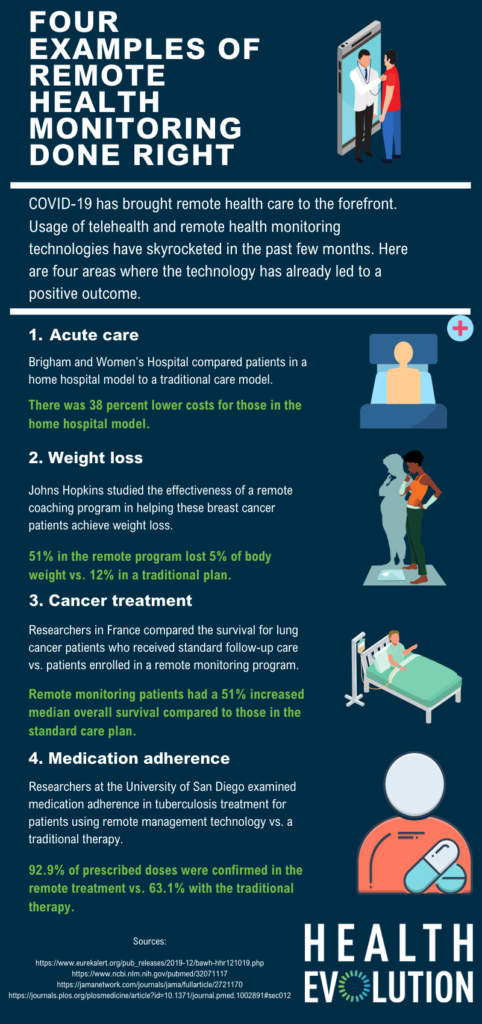Remote care, whether through patient monitoring, telehealth or other means, has historically achieved mixed results in outcomes and revenue opportunities.
Research dating back to the last decade, in fact, has found that some treatments, such as for COPD or cardiac patients, have experienced varied outcomes when patients are monitored remotely. Other studies have shown remote care has little-to-no impact on quality and cost.
Yet amid COVID-19 the use of technologies that enable virtual visits and other types of distance consults has surged.
NYU Langone Health is one example. The system, in New York City, has experienced a 683 percent increase in urgent virtual visits and an unprecedented 4,345 percent rise in non-urgent virtual sessions. Statistics such as NYU Langone Health’s have become increasingly common across the country and will likely continue until the pandemic subsides.
Moreover, Congress appropriated $200 million for the FCC to support health care providers’ use of telehealth and remote health care services during COVID-19. The government has pulled several regulatory and legislative levers to improve reimbursement for the usage of remote care technologies.
Remote care, by many accounts, will remain a common practice after the pandemic, but it has yet to be determined what impact the surge of remote care will have on cost and quality.
For health care executives considering virtualizing care services or planning to add more, remote models have demonstrated positive outcomes in the following four areas:
- Acute care
- Cancer treatment
- Medication adherence
- Weight loss
Acute care: Researchers at Brigham and Women’s Hospital in Boston found that a home hospital model led to reduced cost, utilization, and readmissions, as well as increased physical activity, for recently hospitalized acute care patients compared with usual hospital care.
The home hospital model included remote monitoring, video communication, nurse and physician home visits, intravenous medications, and point-of-care testing. Researchers found that for patients who received care at home, total costs were 38 percent lower than for control patients. Home patients also spent a smaller portion of their day sedentary or lying down and had lower readmission rates within 30 days than control patients.
Cancer treatment: Speaking of cancer patients, researchers in France compared the overall survival for lung cancer patients who received standard follow-up care to detect recurrence vs. patients enrolled in a web-based monitoring program. According to the findings in JAMA, the group using the web-based monitoring tracker had a 51% increased median overall survival compared with the control group (22.5 months vs. 14.9 months). Of the web-based monitoring patients, 47.5% had died at the end of the two-year study compared to 66.7% of those in the control group.
Medication adherence: Researchers at the University of San Diego examined medication adherence in tuberculosis treatment for patients using remote management technologies and compared the results to patients who underwent the more traditional directly observed therapy. The remote treatment comprised of an edible ingestion sensor, an external wearable patch, and a paired mobile device.
According to the researchers, 92.9 percent of prescribed doses were confirmed in the remote treatment, significantly higher than the 63.1 percent of prescribed doses observed in the directly observed therapy. Moreover, all participants in the study said they preferred the remote therapy compared to the directly observed one.
Weight loss: Following a breast cancer diagnosis, a majority of women gain weight, which has been associated with a 1.5-fold increased risk of breast cancer recurrence and death. Researchers at Johns Hopkins studied the effectiveness of a remote coaching program in helping these breast cancer patients achieve weight loss.
The remote coaching plan helped overweight and obese breast cancer survivors helped half of them lose 5 percent or more of their body weight after six months. This compares favorably to the 12 percent of those who participated in a self-directed weight loss program.










